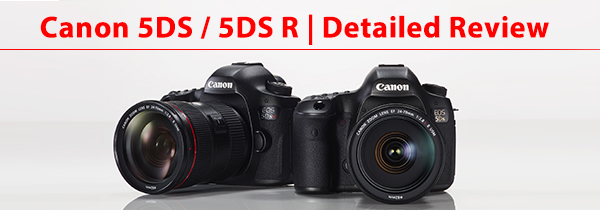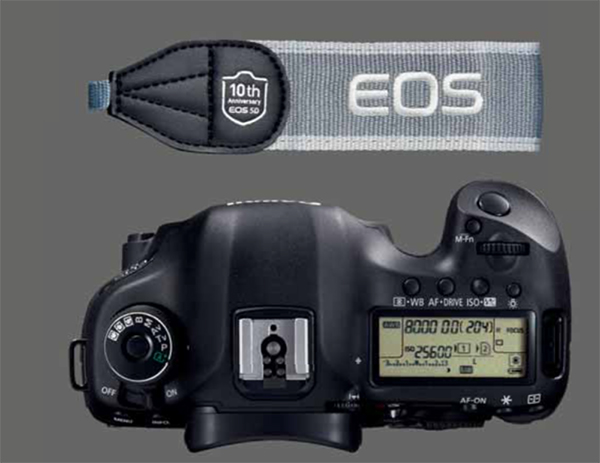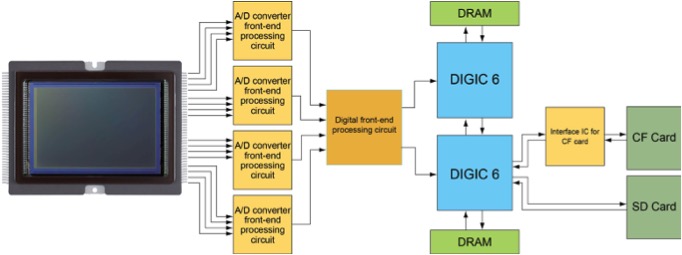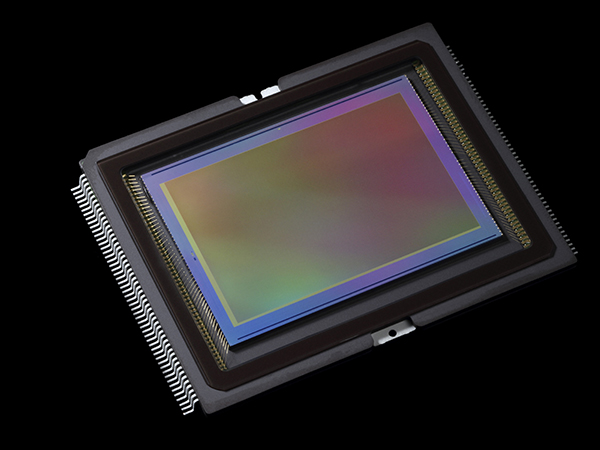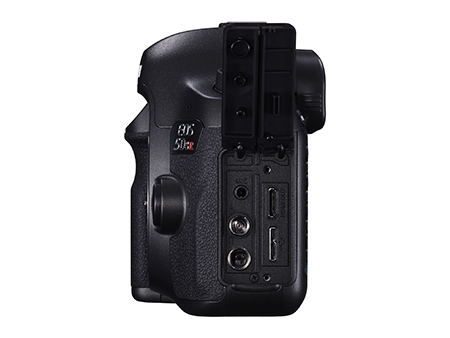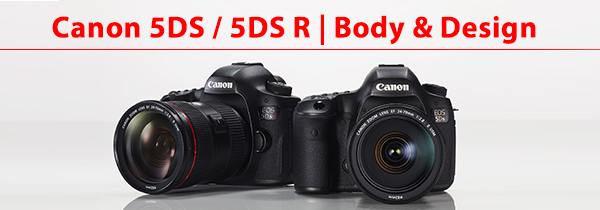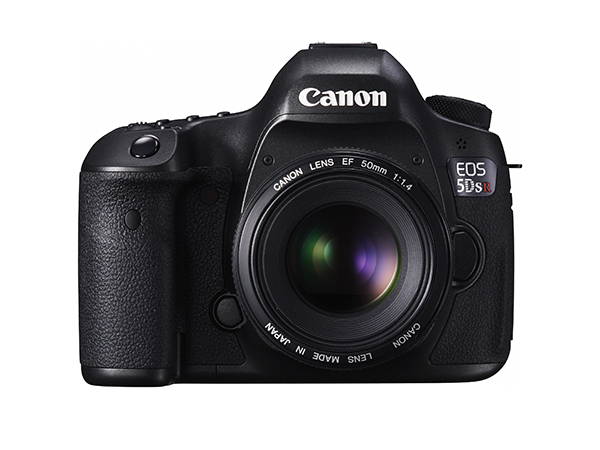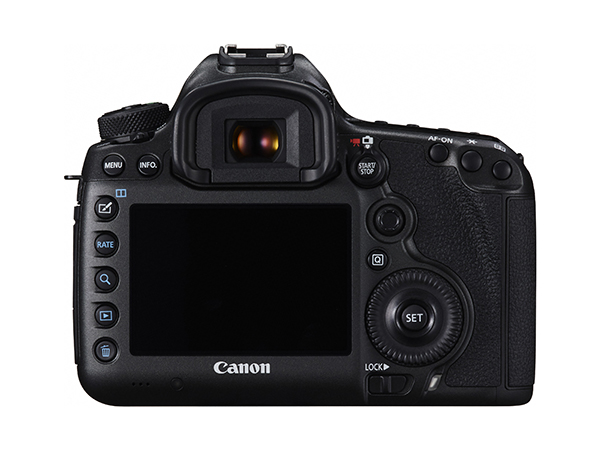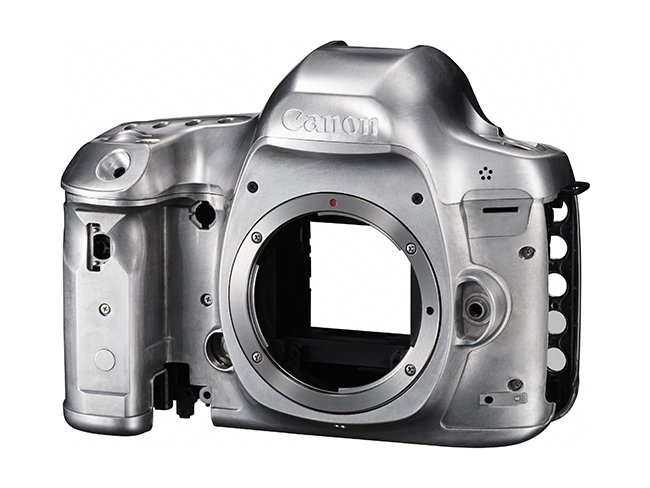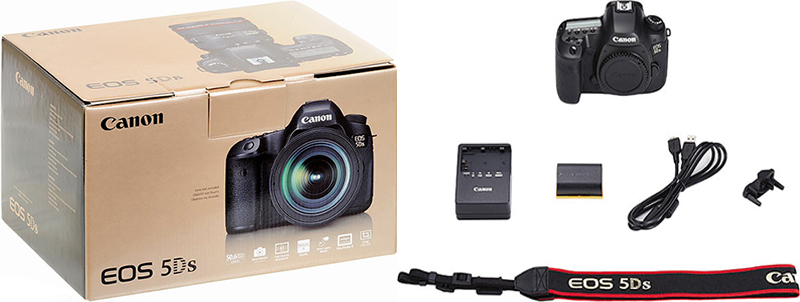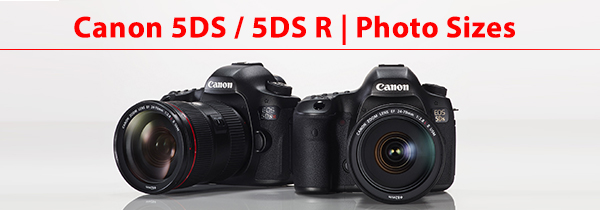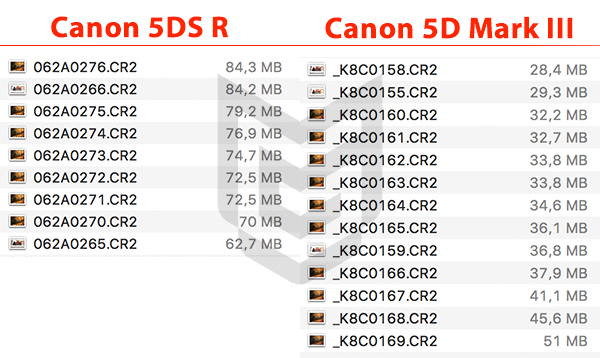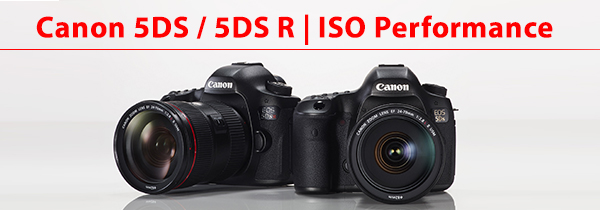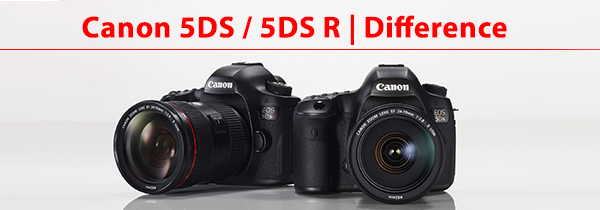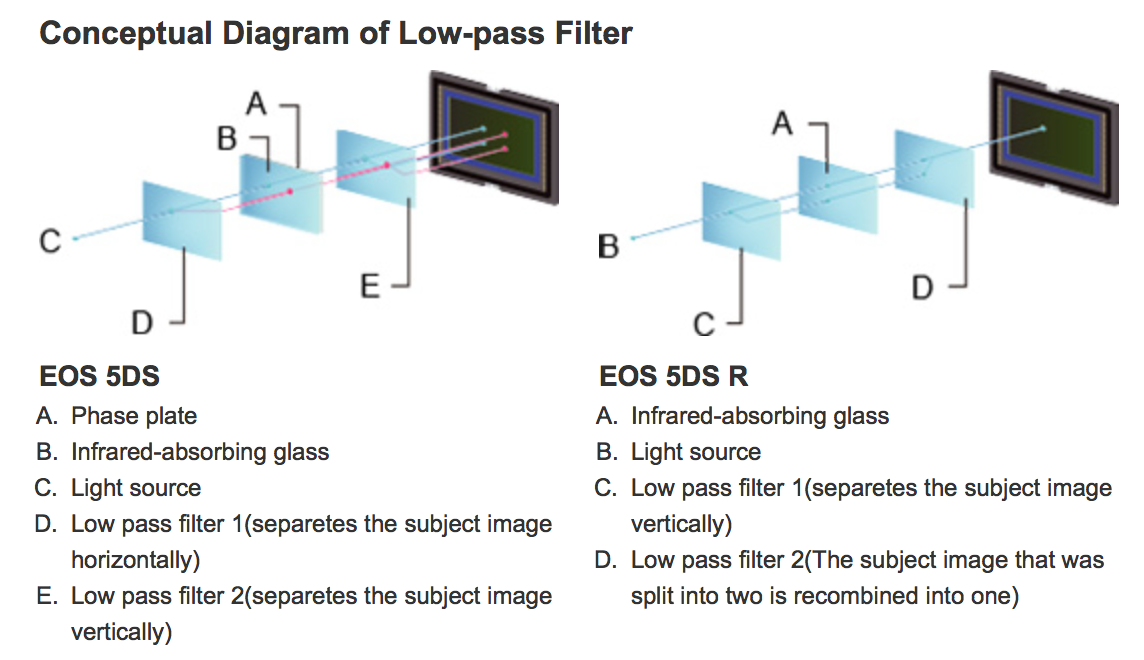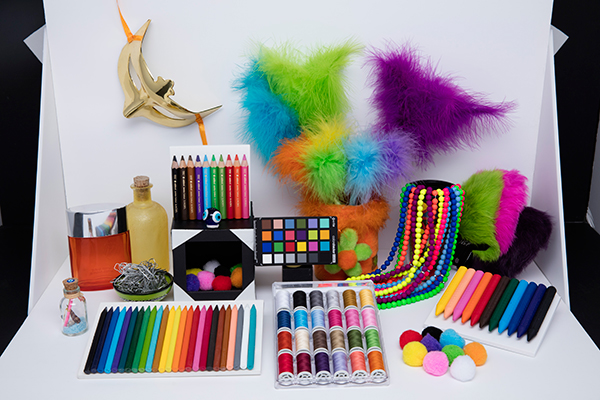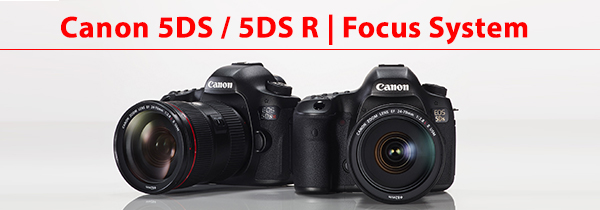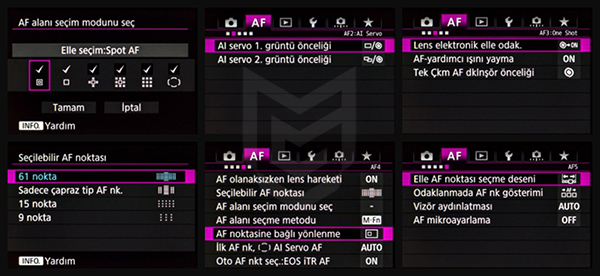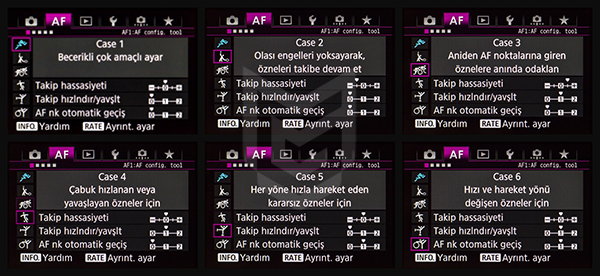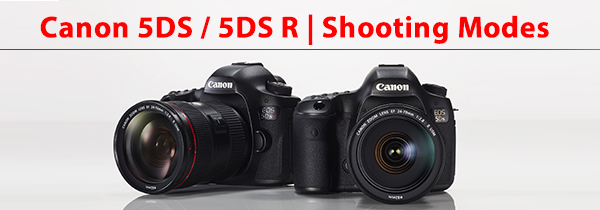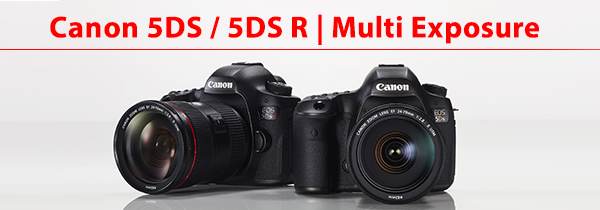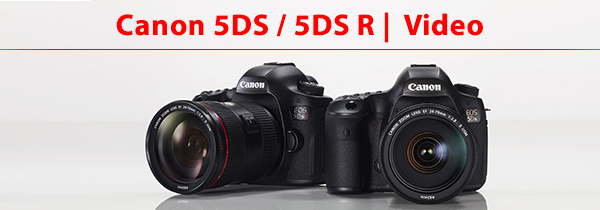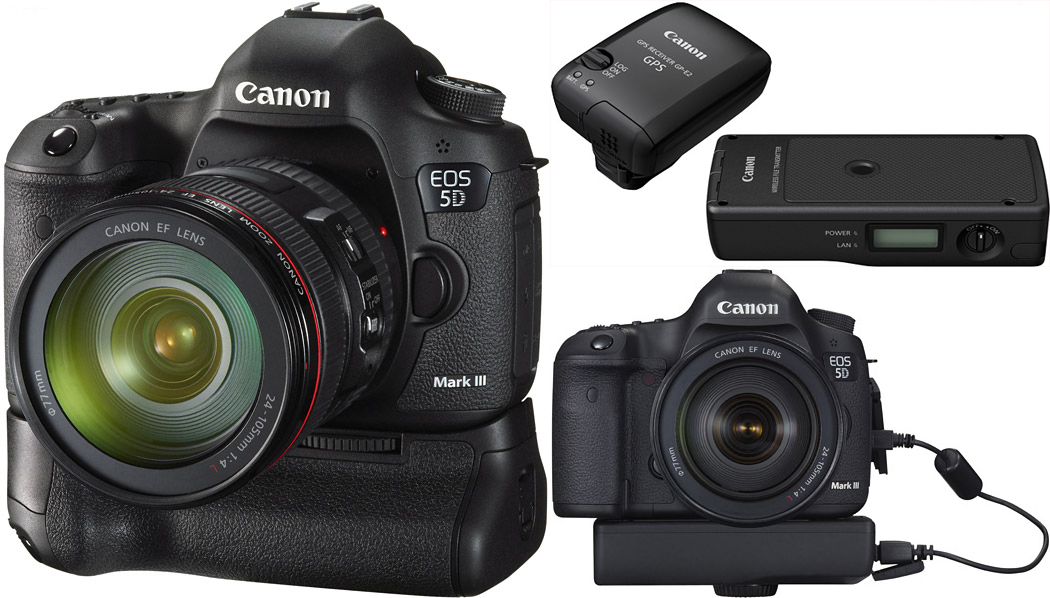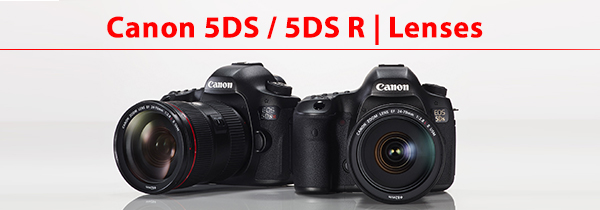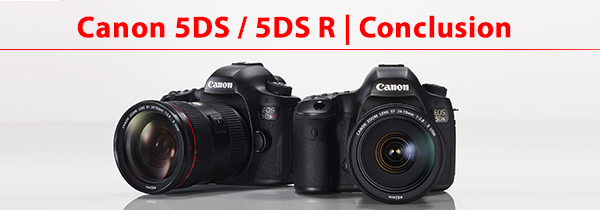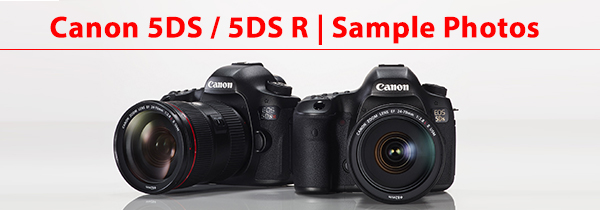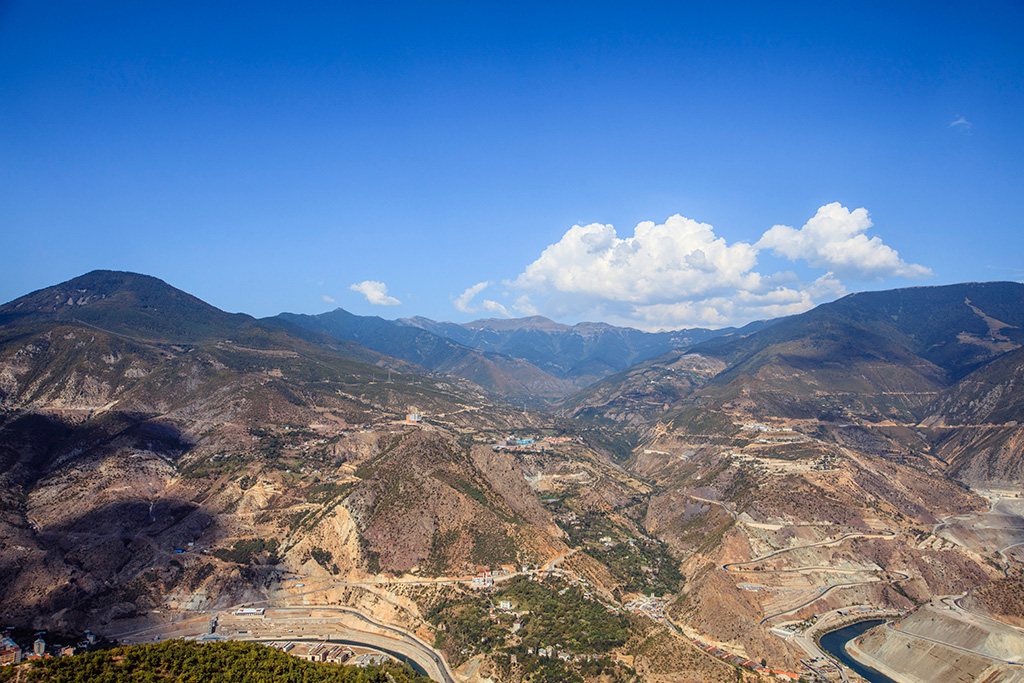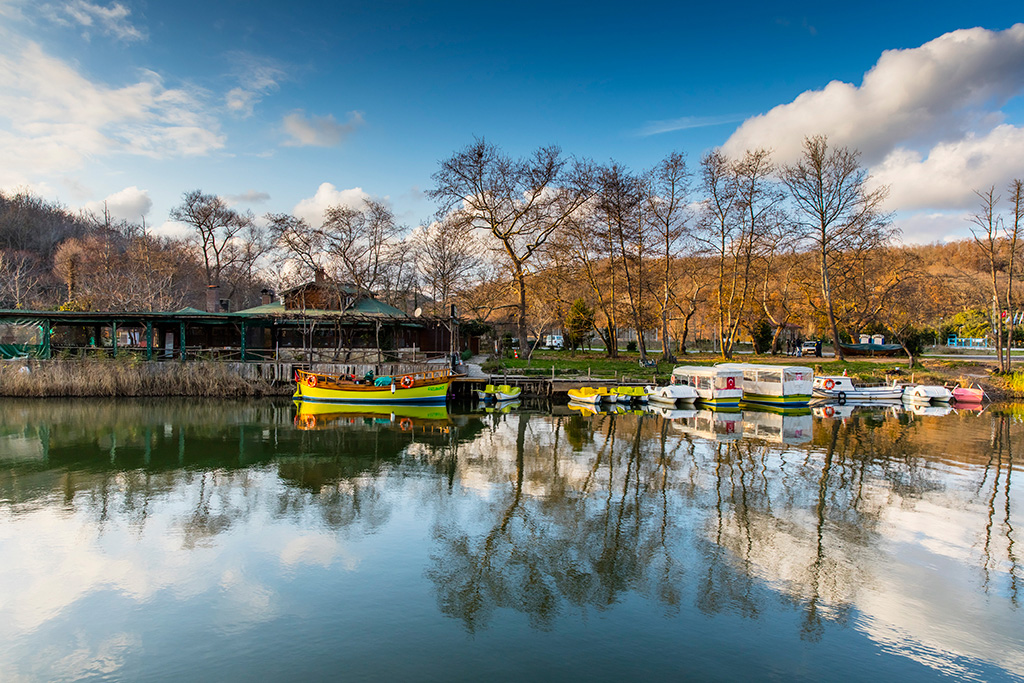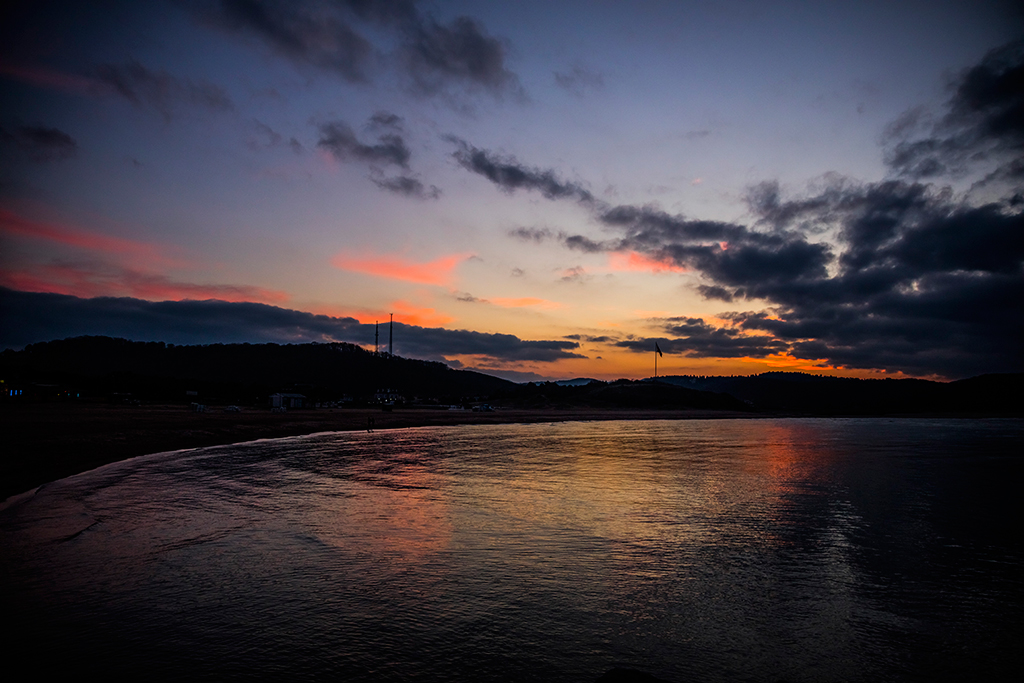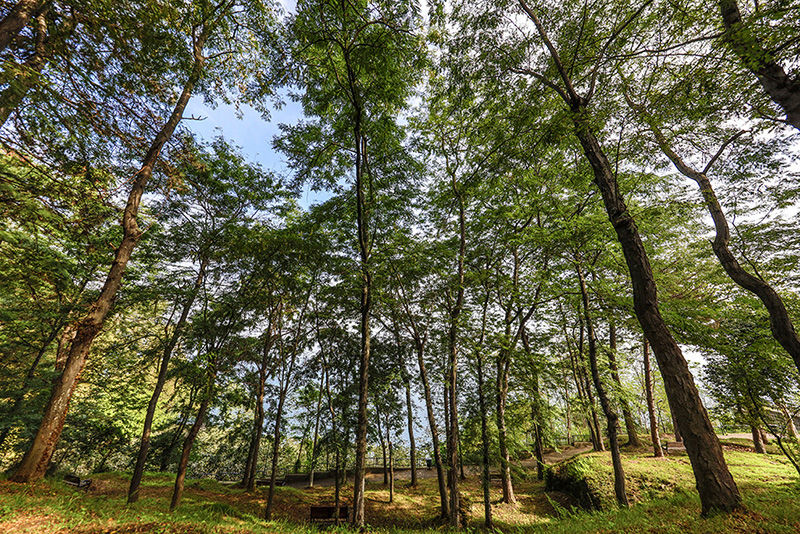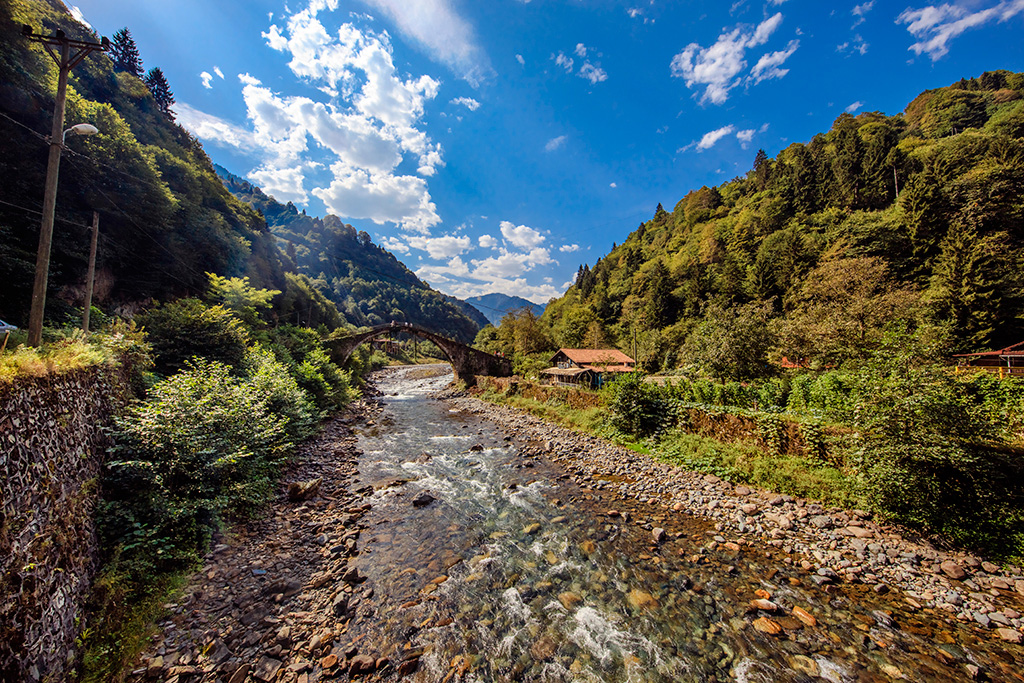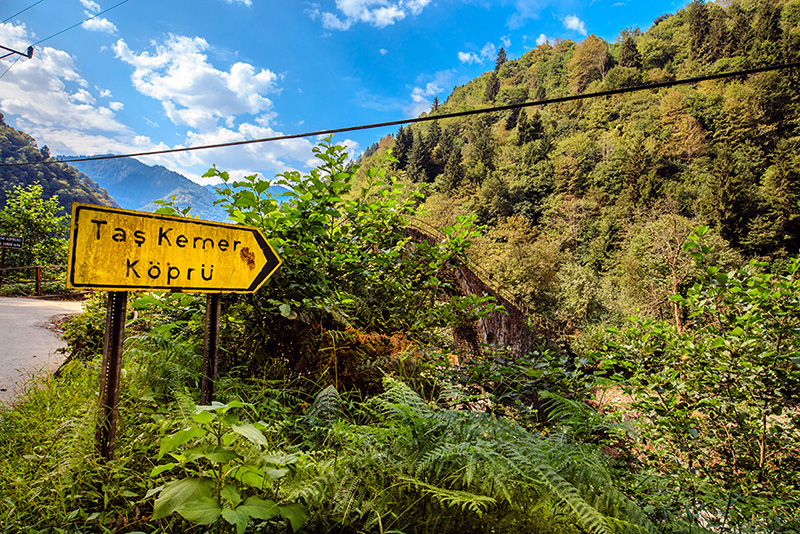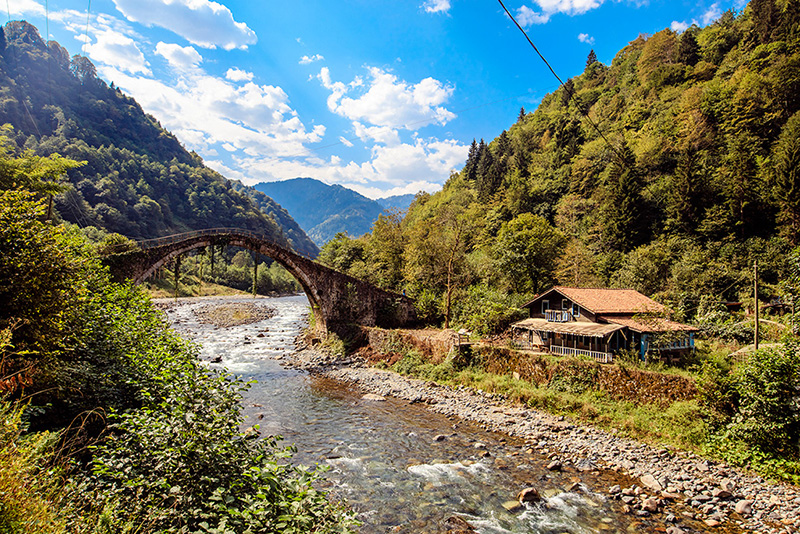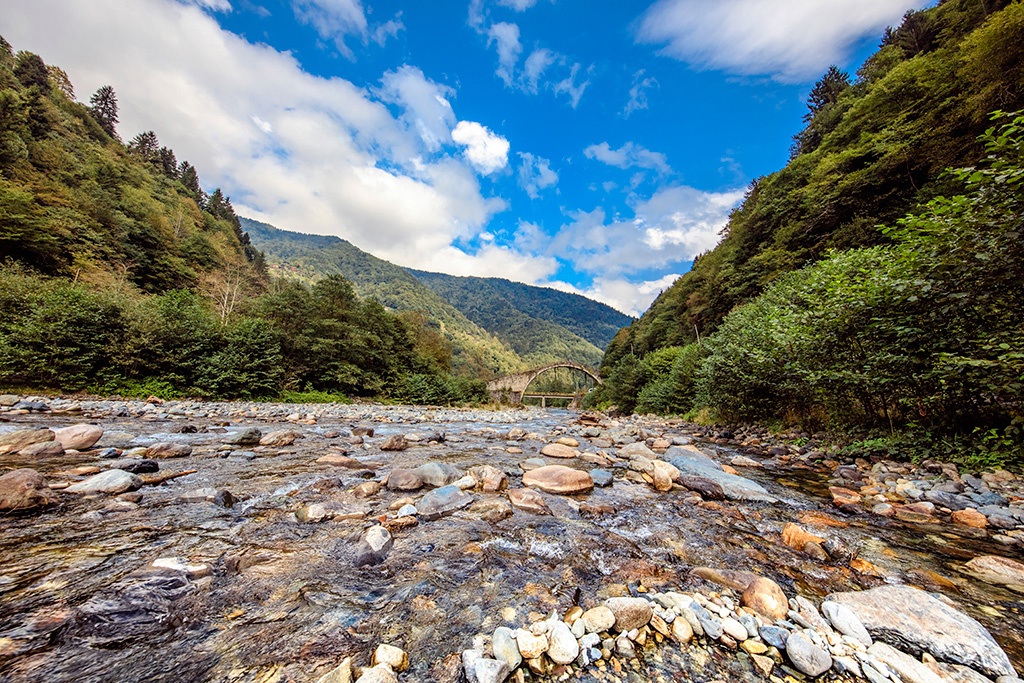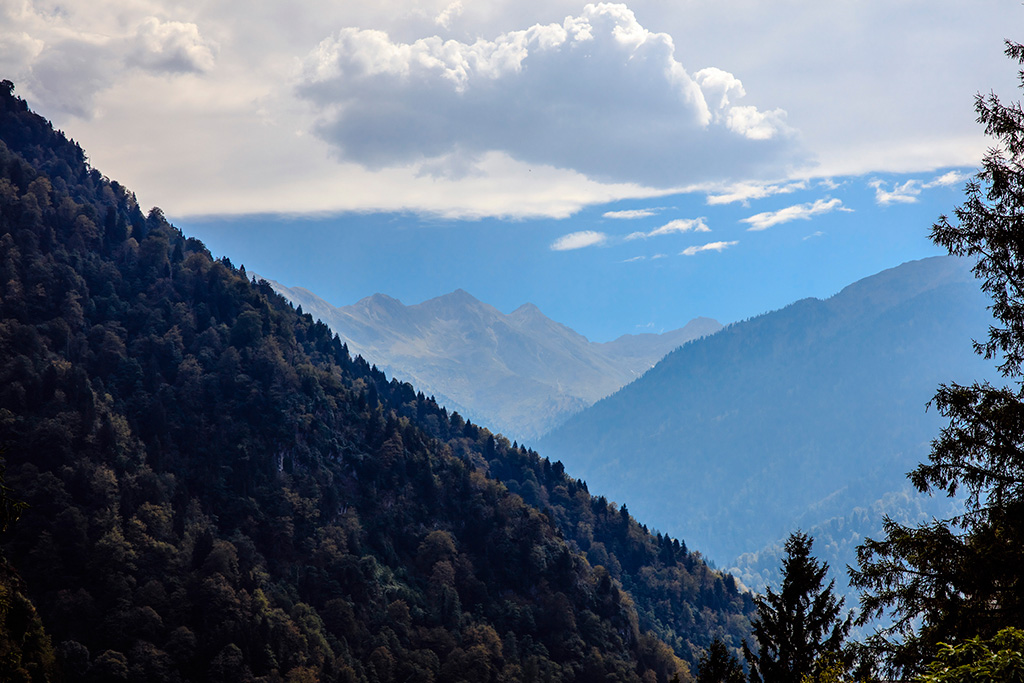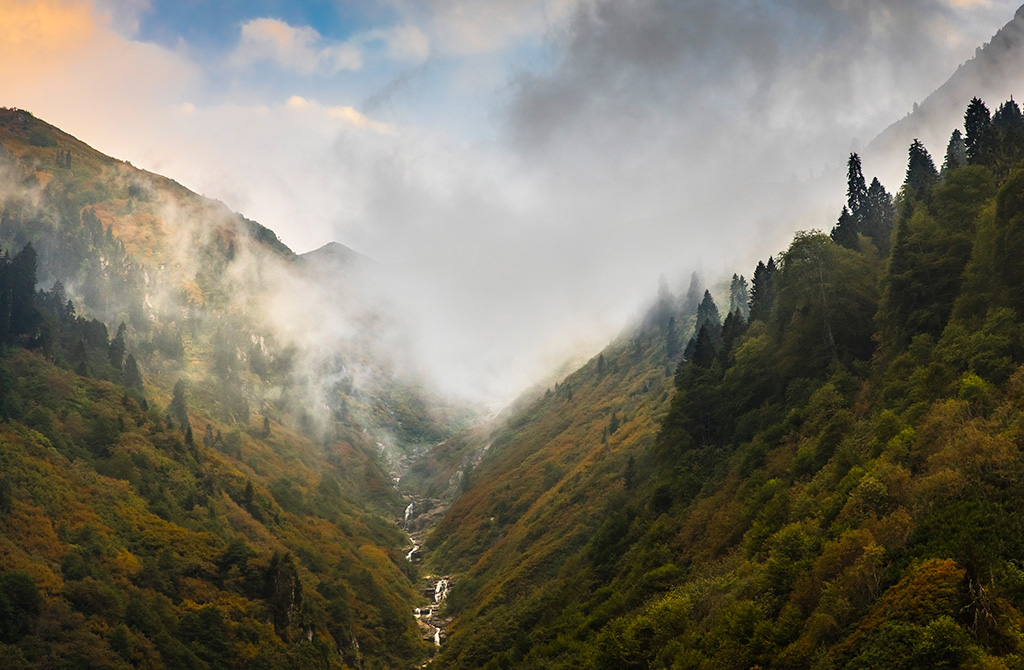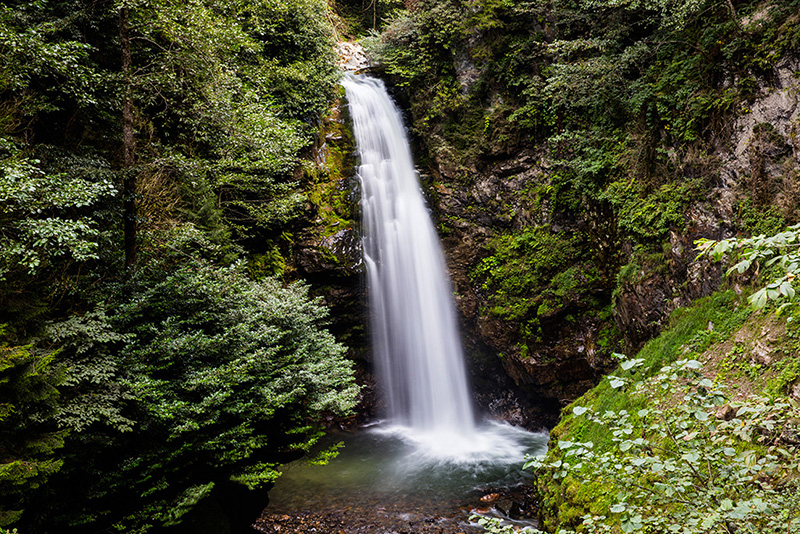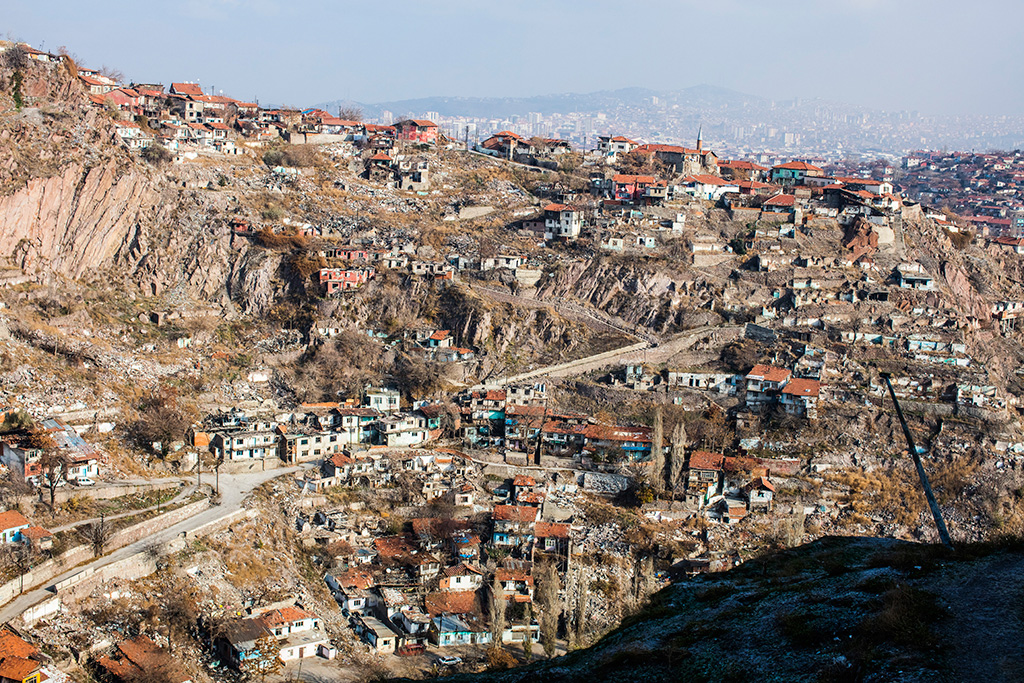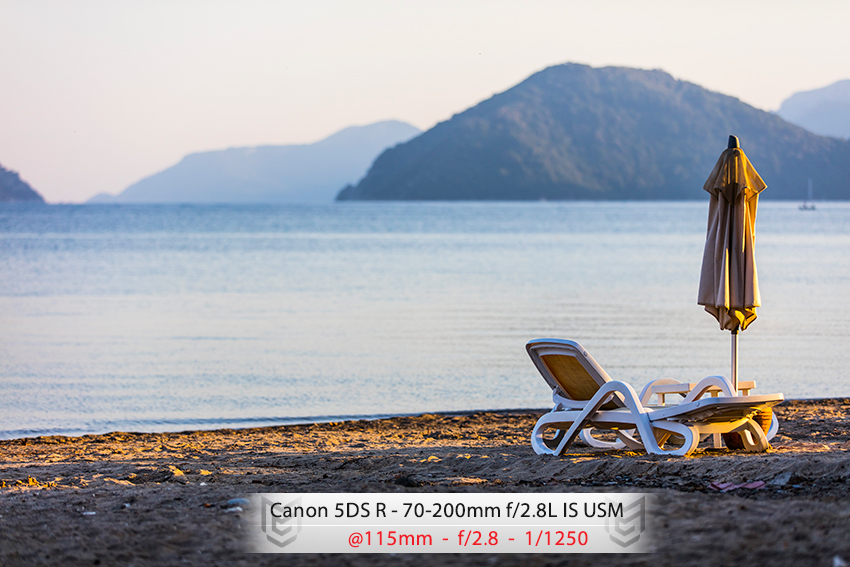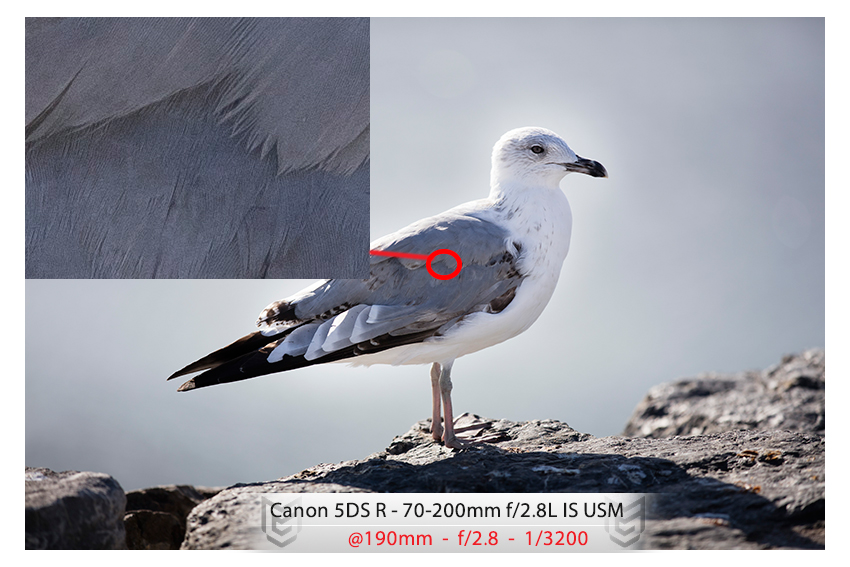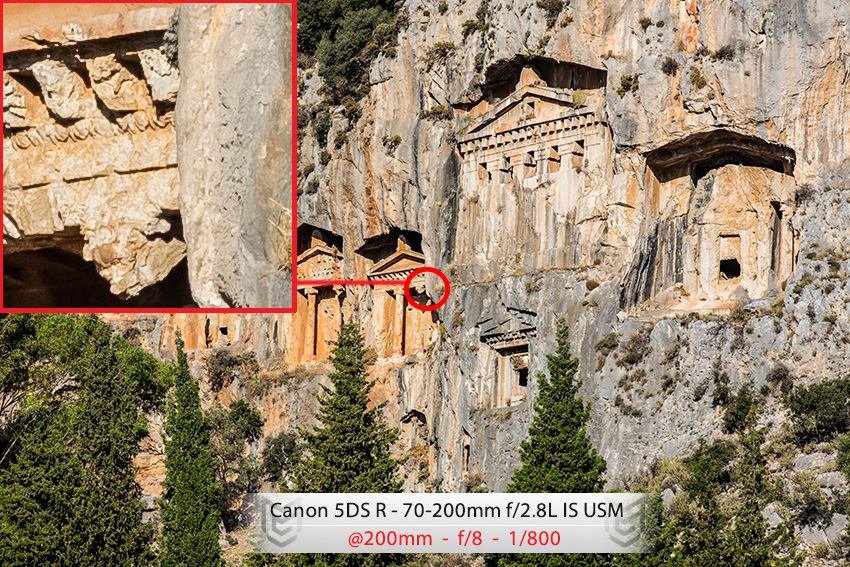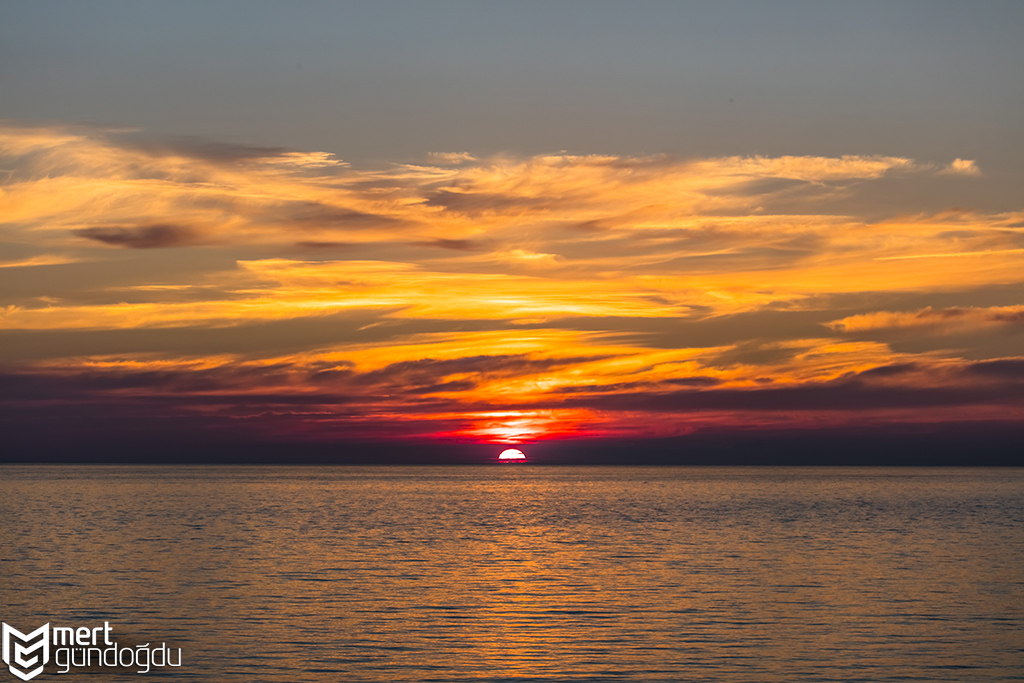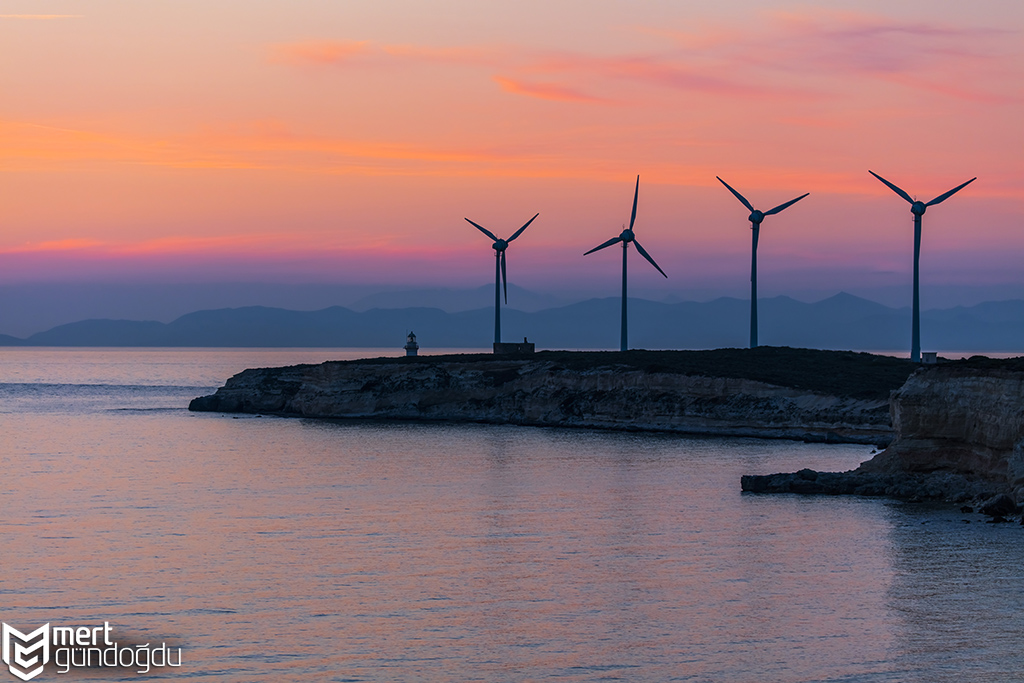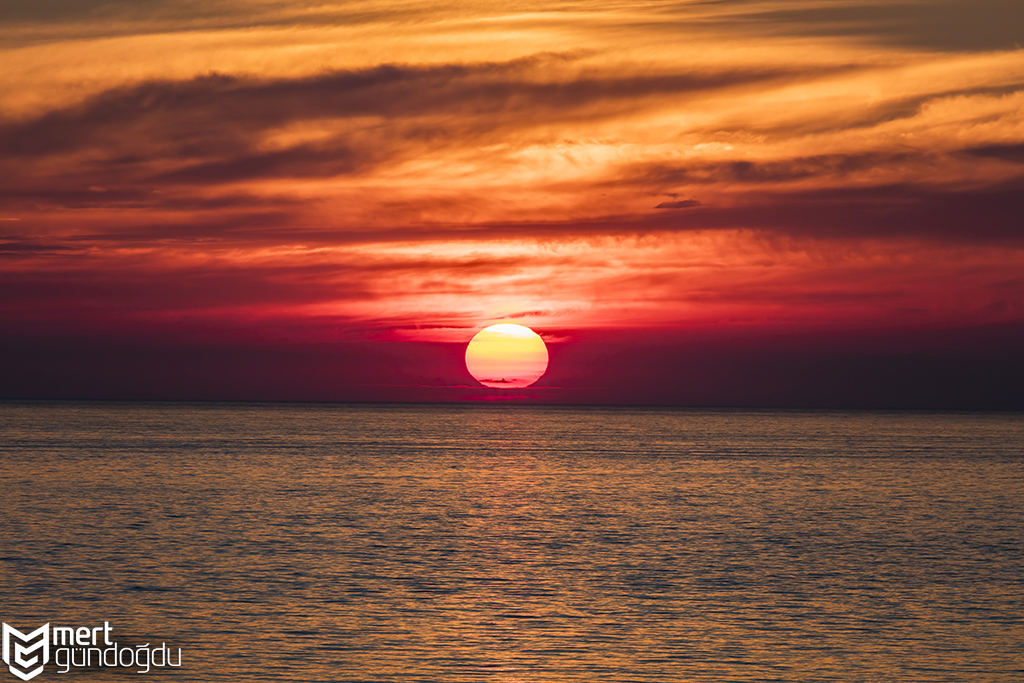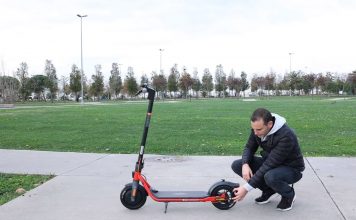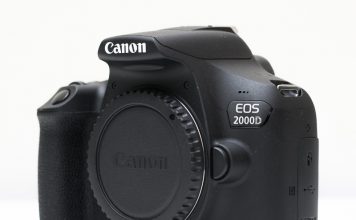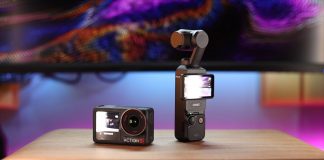Canon 5DS / 5DS R REVIEW
As of February 6th 2015, Canon has launched its 2 -living- legend models, Canon 5DS and 5DS R with 50 megapixels. Before starting the review, I have to indicate that I had asked to the followers about what they would like know about 5DS Series, so I tried to make a review based on these feedbacks. In this review, not to be wordy, I will call both 5DS and 5 DS R as 5DS until the section which I will explain the differences between these two models.
Canon 5DS series is a D-SLR camera with 50.6 MP resolution, the highest resolution level in the world, designed especially for those who need high resolution, and that can be used almost in every shooting purposes including nature, landscape, portrait, architecture and documentation.
Therefore Canon combined medium format photo size in a more compact body with an easy to use and intuitive interface, wide lens, wide flash range and AF technology.
We can simply point out the differences between 5DS and 5DS R as follows: Canon 5DS R version is the version which anti-aliasing filter is canceled-out. This filter is also called as “Low Pass Filter”. Without the Low Pass Filter, high sharpness can be obtained however there may be moiré problem in the photographs. If you are not shooting fabrics mainly, 5DS R will provide you sharper photos.
As 5DS Series cameras can be considered as medium format cameras, I believe it is not correct to compare them with other cameras in the market. One of the frequently asked questions is about its ISO performance and why was it restricted at 6400. When you review all medium format cameras in the market today, you can see that they have achieved these ISO Values just recently. Of course, I am not saying that Canon 5DS has the same quality as the other medium format cameras. They differ much, both with their large sensors and color gamut. But Canon attains the medium format with its megapixels properties.
The second the most frequently asked question since Canon 5DS was launched was whether Canon 5D Mark IV will still be launched or not. I would like to clarify this in the very beginning: Yes, Canon 5D Mark IV will be launched. With this model name or not… What is important is that Canon 5D Mark III will continue.
Canon has formed a brand new segment with its 5DS series. This segment is designed for the users who require high resolution values.
However, as you have seen in the picture above, 2015 was the 10th anniversary of the legendary 5D series! To celebrate this, Canon will be presenting the new 5D Mark III with its complimentary strap manufactured especially for the 10th anniversary. Let’s break the news 🙂 ( In Turkey)
While 5D Mark III was on the market, Nikon carried the megapixels competition to a higher level with its models like “D800” and “D810”. But, Nikon has missed a couple of points that should be considered when upgrading to 36 megapixels. Although Canon took its place among the other brands in the megapixels competition in this process, Canon wanted to benefit from this time window to present the 50 megapixels monster to its users flawlessly. Especially minimizing the vibrations was one the biggest challenges that needed to be overcome in high resolutions such as 50 megapixels.
Kisyoshi Tachibana of Canon Product Planning Department says the following when commented on 5DS:
“The first thing I told to the engineers in the manufacturing department at the very beginning of our research on 5DS series was to minimize the internal vibrations that may be caused by the camera during shooting. Categorizing a camera that can only be used on a tripod as the member of “EOS” series would not suit to Canon. During the meetings before launching the product, we were talking about maximum frame rate of 4 fps but the management insisted on increasing it to 5 fps and this was one of the most challenging issues for us. But we have managed that as well. We have successfully overcome all these challenges thanks to our ability to read from 16 channels.”
50 megapixels Full Frame Sensor
Canon 5DS Series incorporates a 50 MP full frame sensor ideal for photographers shooting Landscape, Advertisement, Studio, Architecture and for Reproduction purposes.
- 2X Digic 6 Processors
Thanks to its 2x Digic 6 processors, Canon 5DS series can shoot 5 frames per second and resulting photos feature 50 megapixels. Apparently this is really very high performance. Canon 5D Mark III shoots 6.5 fps and it produces photographs in 22.3 megapixels. Therefore we are talking about a processor that can double the megapixels rate with 1.5 fps difference. Of course, we should mention the 16 channel recording system along with the new processor.
- JPEG Large/Fine: 31 shots (with UDMA 7 CF card nearly 510 shot )
- RAW: 12 shots (with UDMA 7 CF card nearly 14 shot)
- RAW+JPEG Large/Fine: 12 shots (with UDMA 7 CF card nearly 12 shot)
Brand New Motorized Shutter System: 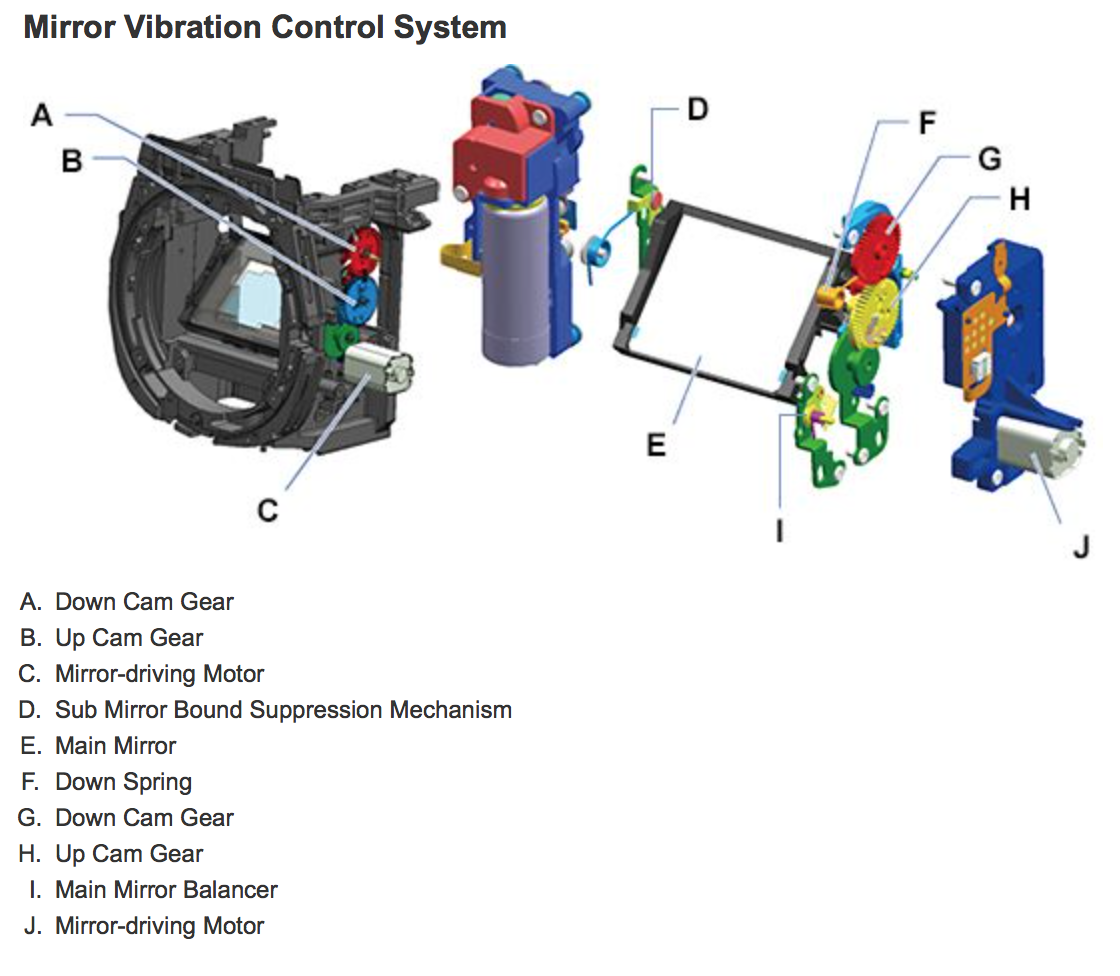 Canon strived to minimize the vibration during shooting while manufacturing the 5DS Series. The first way to minimize this vibration was found via the shutter system that is opening and closing at each shooting. And then in 5DS series, Canon has managed to completely motorize the shutter system that was started to develop with 7D Mark II so managed to minimize the vibrations that may be caused by the shutter. Of course, it was clear that such an electronic shutter would shorten the battery life. But, as a result of successful studies, the energy consumption of the system is reduced. Toshifumi Urakami of ICP Design Department summarized this as follows: “During our experiments, the shutter system of Canon 7D Mark II was very inspiring for us. This shutter system had a completely different structure as it allows 10 fps. What we did was to simplify this system and increase its control capacity in order to optimize it for 5DS Series.”
Canon strived to minimize the vibration during shooting while manufacturing the 5DS Series. The first way to minimize this vibration was found via the shutter system that is opening and closing at each shooting. And then in 5DS series, Canon has managed to completely motorize the shutter system that was started to develop with 7D Mark II so managed to minimize the vibrations that may be caused by the shutter. Of course, it was clear that such an electronic shutter would shorten the battery life. But, as a result of successful studies, the energy consumption of the system is reduced. Toshifumi Urakami of ICP Design Department summarized this as follows: “During our experiments, the shutter system of Canon 7D Mark II was very inspiring for us. This shutter system had a completely different structure as it allows 10 fps. What we did was to simplify this system and increase its control capacity in order to optimize it for 5DS Series.”
- Mirror Lock Delay Menu
 Currently, most Canon DSLR cameras have Mirror Lock System. When you activate the Mirror Lock system, you press the release button to shoot a photograph. Then when you press the release button again, the mirror opened during shooting is closed. Therefore, the vibration that may be caused during the mirror shut does not affect the recording. With this feature, you can complete the shooting by pressing the release button twice as in ordinary, or you can control the opening/ closing of the mirror by entering a delay time once the release button is pressed.
Currently, most Canon DSLR cameras have Mirror Lock System. When you activate the Mirror Lock system, you press the release button to shoot a photograph. Then when you press the release button again, the mirror opened during shooting is closed. Therefore, the vibration that may be caused during the mirror shut does not affect the recording. With this feature, you can complete the shooting by pressing the release button twice as in ordinary, or you can control the opening/ closing of the mirror by entering a delay time once the release button is pressed. - Reinforced Tripod Connection Point
- White Priority Auto White Balance Menu
 One of the new features included in Canon 5DS Series is “White Priority” auto white balance. Previously, when shooting in white balance mode in auto setting, the desired white balance could not be detected in some cases. With this feature now there are 2 different options in Auto White Balance Menu: “Ambiance Priority” and “White Priority”.
One of the new features included in Canon 5DS Series is “White Priority” auto white balance. Previously, when shooting in white balance mode in auto setting, the desired white balance could not be detected in some cases. With this feature now there are 2 different options in Auto White Balance Menu: “Ambiance Priority” and “White Priority”. - Timelapse & Bulb Shooting Options
 Canon 5DS is the first 5D Series model with integrated Intervalometer. Our camera will give you freedom to take as many photos as you want in a time frame of our choice both using the bulb mode and timelapse shooting. In bulb mode, it is possible to shoot photos from 1 second to 99 hours 59 minutes 59 seconds long. You can also adjust the number of shots to 1 to 99 frames. If you choose 00 in this setting, your camera will continue shooting until you stop it. 5DS records Timelapse videos in MOV format. In order to shoot timelapse videos, set your camera to “video” mode, and the “timelapse” menu is automatically activated. Otherwise, if you start a shooting in “Shooting” mode from “Interval Timer” menu, the camera will only provide you the still image and will not record the shooting in video format.
Canon 5DS is the first 5D Series model with integrated Intervalometer. Our camera will give you freedom to take as many photos as you want in a time frame of our choice both using the bulb mode and timelapse shooting. In bulb mode, it is possible to shoot photos from 1 second to 99 hours 59 minutes 59 seconds long. You can also adjust the number of shots to 1 to 99 frames. If you choose 00 in this setting, your camera will continue shooting until you stop it. 5DS records Timelapse videos in MOV format. In order to shoot timelapse videos, set your camera to “video” mode, and the “timelapse” menu is automatically activated. Otherwise, if you start a shooting in “Shooting” mode from “Interval Timer” menu, the camera will only provide you the still image and will not record the shooting in video format. - Canon Photograph Style – Fine Detail
 With “Fine Detail” menu provided as a “Picture Style”, we can produce sharper results in JPEGs. Logically, the camera increases the sharpness and reduces the contrast. Therefore, the details in the photo increase as well. Besides, under the “Sharpness” tab, we see two different options as “Fineness” and “Threshold”. When you increase the “Threshold”, the sharpness of areas with digital noise decreases. So the photograph appears sharper and cleaner.
With “Fine Detail” menu provided as a “Picture Style”, we can produce sharper results in JPEGs. Logically, the camera increases the sharpness and reduces the contrast. Therefore, the details in the photo increase as well. Besides, under the “Sharpness” tab, we see two different options as “Fineness” and “Threshold”. When you increase the “Threshold”, the sharpness of areas with digital noise decreases. So the photograph appears sharper and cleaner. - 150,000 RGB Metering System
Canon uses the same 150,000 pixels metering system used in Canon 7D Mark II in 5D Series. This sensor is very sensitive to blue/red/green and infrared lights and can make quite more consistent metering. This system divides the light information received by the sensor into 252 areas and allows us to obtain the correct colors and metering. I would like to note that, as in 1DXseries, we still cannot obtain metering from AF points in spot metering feature. For the first time in 5D series, 150,000 pixels RGM metering system is assisting to the Auto Focus System. It also assists others like determining the objects inside the frame and tracking these objects as they move.
- 1.3x and 1.6x Crop Option
 For the first time, we see the crop option in a Canon camera. Here we have 2 different cropping modes: 1.3x and 1.6x Cropping Options. 1.3x cropping results 30 megapixels (6,768 x 4,512), and 1.6x (APS-C) cropping results 19 megapixels (5,424 x 3,616) size photographs. Therefore, when shooting at 400 mm with Canon 5DS Series, if you activate 1.6x crop mode, it provides you a picture equivalent to 640 mm in 19 megapixels. This means a resolution of only 4 megapixels lower than Canon 5D Mark III.
For the first time, we see the crop option in a Canon camera. Here we have 2 different cropping modes: 1.3x and 1.6x Cropping Options. 1.3x cropping results 30 megapixels (6,768 x 4,512), and 1.6x (APS-C) cropping results 19 megapixels (5,424 x 3,616) size photographs. Therefore, when shooting at 400 mm with Canon 5DS Series, if you activate 1.6x crop mode, it provides you a picture equivalent to 640 mm in 19 megapixels. This means a resolution of only 4 megapixels lower than Canon 5D Mark III.
- Personal Customizable Menu
 Canon, when compared to other products in the market, always manufactures cameras with the simplest menu which offer intuitive ease of use for users from every scope. And Canon does not stops here, and also allows customization by reprogramming the buttons based on our own personal needs. Thus, you can assign any feature to any button. Canon, along with 5DS series, also made its classical Quick Control Screen suitable for personalization. You place the feature of your choice to any area and arrange it among approximately 30 different menu combinations as you wish.
Canon, when compared to other products in the market, always manufactures cameras with the simplest menu which offer intuitive ease of use for users from every scope. And Canon does not stops here, and also allows customization by reprogramming the buttons based on our own personal needs. Thus, you can assign any feature to any button. Canon, along with 5DS series, also made its classical Quick Control Screen suitable for personalization. You place the feature of your choice to any area and arrange it among approximately 30 different menu combinations as you wish.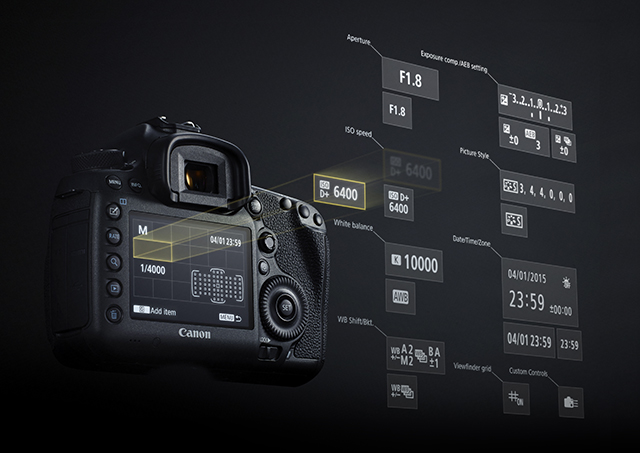
- Smart Viewfinder
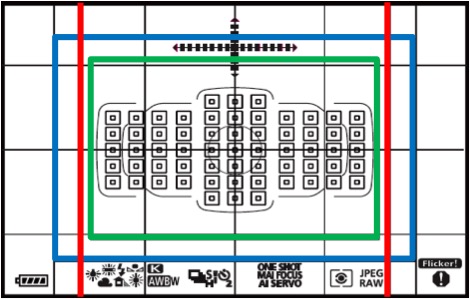
 “Smart Viewfinder” technology first introduced to us with Canon 7D Mark II is also present in 5DS Series. Our viewfinder is as you see above. This should not intimidate you visually. When you use the cropping modes of our camera, the camera automatically places a frame and, in the viewfinder, it blacks out the areas that are cropped out. Here, the blue frame activates 1.3x cropping mode, green frame activates 1.6x cropping mode and red frame activates the square format cropping mode. You can add and delete the following images as you wish, and there is a balance on the top of the screen as well. You can prevent unwanted tilting during shooting.
“Smart Viewfinder” technology first introduced to us with Canon 7D Mark II is also present in 5DS Series. Our viewfinder is as you see above. This should not intimidate you visually. When you use the cropping modes of our camera, the camera automatically places a frame and, in the viewfinder, it blacks out the areas that are cropped out. Here, the blue frame activates 1.3x cropping mode, green frame activates 1.6x cropping mode and red frame activates the square format cropping mode. You can add and delete the following images as you wish, and there is a balance on the top of the screen as well. You can prevent unwanted tilting during shooting.
- Anti-Flicker Feature
 Another advantage of 150,000 pixel RGM metering system is the “Anti Flicker” feature. The human eye cannot detect the color changes and fluctuations in artificial lights such as florescence. But the sensors of our camera recognizes them, so different color tones and fluctuations can be seen in your pictures. However, “anti-flicker” feature solves this problem.
Another advantage of 150,000 pixel RGM metering system is the “Anti Flicker” feature. The human eye cannot detect the color changes and fluctuations in artificial lights such as florescence. But the sensors of our camera recognizes them, so different color tones and fluctuations can be seen in your pictures. However, “anti-flicker” feature solves this problem. - USB 3.0
As the megapixels value increased in Canon 5DS, the file sizes increased accordingly. Larger file size means longer transfer time. To decrease the transfer time, we will be using USB 3.0 technology in 5DS Series. In other words, we are not using our outdated cables.
In Canon 5DS Series, a user friendly product is designed by utilizing the outer body structure of 5D Mark III , ergonomically appreciated by most of the users. When a Canon 5D Mark III user decides to upgrade to 5DS, he/she will continue to shoot photos without any hassles or orientation period.
For Canon, there are only 2 differences in outer body structures:
- The Canon logo on the front side is bigger
- A different shade of black is used
But when you dig into the camera, it becomes a different story; you realize that you have a completely renewed camera. We see new features such as 2x Dual Digic 6 processor, 50 megapixels Full Frame sensor, an updated shutter system, and reinforced tripod connection section. With its totally magnesium alloy body structure, it enables shooting even in the most challenging situations. Also, 5Ds Series is dust and humidity resistant as its big brother 1DX. The body can operate easily in a temperature range of 0 – 40˚C.
With a size of 152 x 116.4 76.4 mm, the 5DS weights 845 grams.
There is a 1 CF and 1 SD memory card slot in our camera. For CF cards, it supports up to UDMA memory card speeds. SD, SDHC and UHS-1 memory cards can be used in SD card slots and different formats can be saved into 2 cards simultaneously. For instance, you can record in RAW format to CF cards while recording smaller sizes in JPEG format to the SD card.
If we look at the connections of our camera, a microphone terminal, a PC Flash Sync terminal, a Remote control terminal, USD 3.0, Mini HDMI and NTSC or PAL analog video terminals can be seen.
The box includes; ( in Turkey)
- Canon 5DS or 5DS R
- LP-E6N Battery
- LC-E6 Charger
- Viewfinder Rubber
- Customized strap for the body
- Cable Protector
- IFC-150U II Cable USB 3.0
- EOS Digital Solution Disk
- Turkish User Manual
- Canon Eurasia Warranty Card
Before writing this review, I had asked you let me know the subjects you are curious about 5DS series. One of the most popular questions was how to process and save the 50 megapixels photos. In the comparison table above, you can see the sizes of the photos I took for my ISO tests for this review. When you look at the names of the photos, you can think that ISO 100 is the lowest in number. In 5DSR and 5D Mark III, the ISO value and photo size increase proportionally. You can see it in the name list from up to bottom.
- In 5DSR, night shootings begin from 70 MB and reach to 84 MB in ISO 12,800.
- In 5DMark III, night shootings begin from 28.4 MB and reach to 51 MB in ISO 102,400.
We will certainly need a powerful computer to process the photos taken by 5DS series. My computer has 512 SSD, 16 GB RAM with i7 processor. After processing the photos in Camera Raw, the fans begin to run faster when saving.
Actually I cannot tell you the exact specifications of the computer you need to have but I advise you to make your edits in a computer with at least 8 GB RAM and SSD hard disc capacity. Also, USB 3.0 compliant computer will help you save time while transferring your photos.
Let’s come to the most anticipated section: “The differences between Canon 5DS Series and 5D Mark III”.
In fact, all of the features I mentioned in “What’s New?” section are the differences between the 5DS Series and 5D Mark III. I don’t want to be wordy by repeating them all once again.
Let’s look at the superiorities of 5D Mark III when compared to 5DS:
- Clean HDMI Output
- Headphone Output
- Up to ISO 102,400 capacity
I will make 2 different comparisons at this stage. First, the resolution and megapixels comparison of Canon 5DS R and 5D Mark III. Second, night ISO performances in outdoor shootings.
I have been using Canon 5DS and 5DS R by turns for almost 4-5 months. I have performed the sharpness test for Canon 5DS R and Canon 5D Mark III with manual settings and 2 external flashes inside a dark room. Photos are taken in 2 sec delay shooting mode with a tripod. You can see the shooting setup at the photographs below.
Now, you will see 100% cropping comparisons with samples taken from various parts of the photo above. A Canon EF 24-70 mm f /2.8L II USM lens is used and images were recorded in RAW format. Photos, without applying any post processing, opened with Adobe Camera and converted into JPEG.
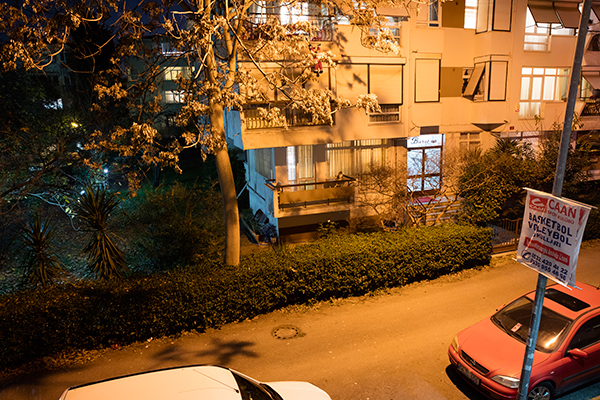 You may see the sample photo of 5DSR and 5D Mark III ISO tests below. A Canon EF 24-70 mm f /2.8L II USM lens is used. The tests are performed again on a tripod with 2 sec delay shooting. In this test, photos are obtained at the highest resolutions of both cameras and then all of them are reduced to 5D Mark III sizes. RAW format is used during shooting, and photos, again with no post-processing, opened with Adobe Camera and converted into JPEG.
You may see the sample photo of 5DSR and 5D Mark III ISO tests below. A Canon EF 24-70 mm f /2.8L II USM lens is used. The tests are performed again on a tripod with 2 sec delay shooting. In this test, photos are obtained at the highest resolutions of both cameras and then all of them are reduced to 5D Mark III sizes. RAW format is used during shooting, and photos, again with no post-processing, opened with Adobe Camera and converted into JPEG.
When the shootings with both cameras compared, it is obvious that Canon 5DS Series read and process the colors better. Especially when you look at the ISO test, the colors in 5DS are more natural as well as more vivid with 5D Mark III. This toning will make a really huge difference especially for photographers who shoot mainly portraits and products. In such shootings, we would like to shoot the colors as we see them, and use various technologies to achieve this. 5DS, with the power of its new processor and metering systems, provides us a quite better color consistency.
Let’s begin with the name “5DS” first. “Mark” tag was not added to 5DS Series as this is a totally new and special segment. In fact the “S” letter in the model name is inherited from its one of the big siblings, from 1Ds. 1Ds Series which made its debut in 2012 was providing better quality images when compared to the faster 1D Series. This tradition is still carried on 5D Series and the camera is called as 5DS. Additionally, “R” letter in 5DS R means “Resolution”.
The only difference between 5Ds and 5DS R is the anti-aliasing filter in Canon 5DS R. This filter is also called as “Low Pass Filter”. When there is no Low Pass Filter, higher sharpness levels can be obtained, however there may be moiré problem in the photos. If you are not shooting fabrics mainly, 5DS R will provide you sharper photographs.
On the web, you may see that 5DSR does not have “Low Pass Filter”. Because, it is easier to explain it in that way, however the other side of the coin is different… 5DS operates using the same system with all the other cameras manufactured by Canon, however with 5DS R model things are changing. Canon, for the first time canceled the Low Pass Filter in a camera. As a completely different R&D process has been performed for 5DS R, the manufacturing cost of the camera has increased when compared to 5Ds. In fact, there are 2 Low Pass Filters in 5DSR. Yep, you did not hear it wrong, there are 2! One of the filters sorts out the incident light while the second Low Pass filter combines them again, so the Low Pass Filter effect is canceled, resulting sharper photos and moiré effects especially when shooting fabrics or similar objects.
Canon 5DS Series uses the same 61-points auto focusing module in Canon 1DX and 5D Mark III series. Of these 61 focusing points, 41 are cross type and 5 are double cross type. So, faster focusing gets easier in low light. For the first time in 5D series, the metering system helps to determine the location of objects for AF system and helps to track the objects. Therefore, AF system and metering system operate together for object tracking. As in 1DX series, we cannot get metering from AF points in spot metering feature.
Case1 Skillful Multi-Purpose Setting:
For general shootings, the most ideal is AF setting. It is recommended when the movement of the object is predictable.
Case2 Ignore possible distractions, continue to track the subject:
This shooting mode is ideal shooting mode for tennis players, butterfly stroke swimmers and skiers. The camera while focusing on the object, ignores the distractions and quickly focuses on the object.
Case3 Instantly Focus on Subjects Moving to AF Points Suddenly:
This shooting mode is the ideal mode for motorbike races, auto races, skiers, skateboard shootings or Freestylers.
Case 4 For rapidly accelerating or decelerating subjects:
This mode is ideal for soccer, basketball or motor sports.
Case 5 Unstable subjects moving rapidly in every direction:
For this mode, skaters on the ice rink are the best examples. They are fast and they can go in any direction on the rink.
Case 6 Subjects with changing speed and direction vectors:
This mode is ideal for rhythmic gymnastics and similar actions.
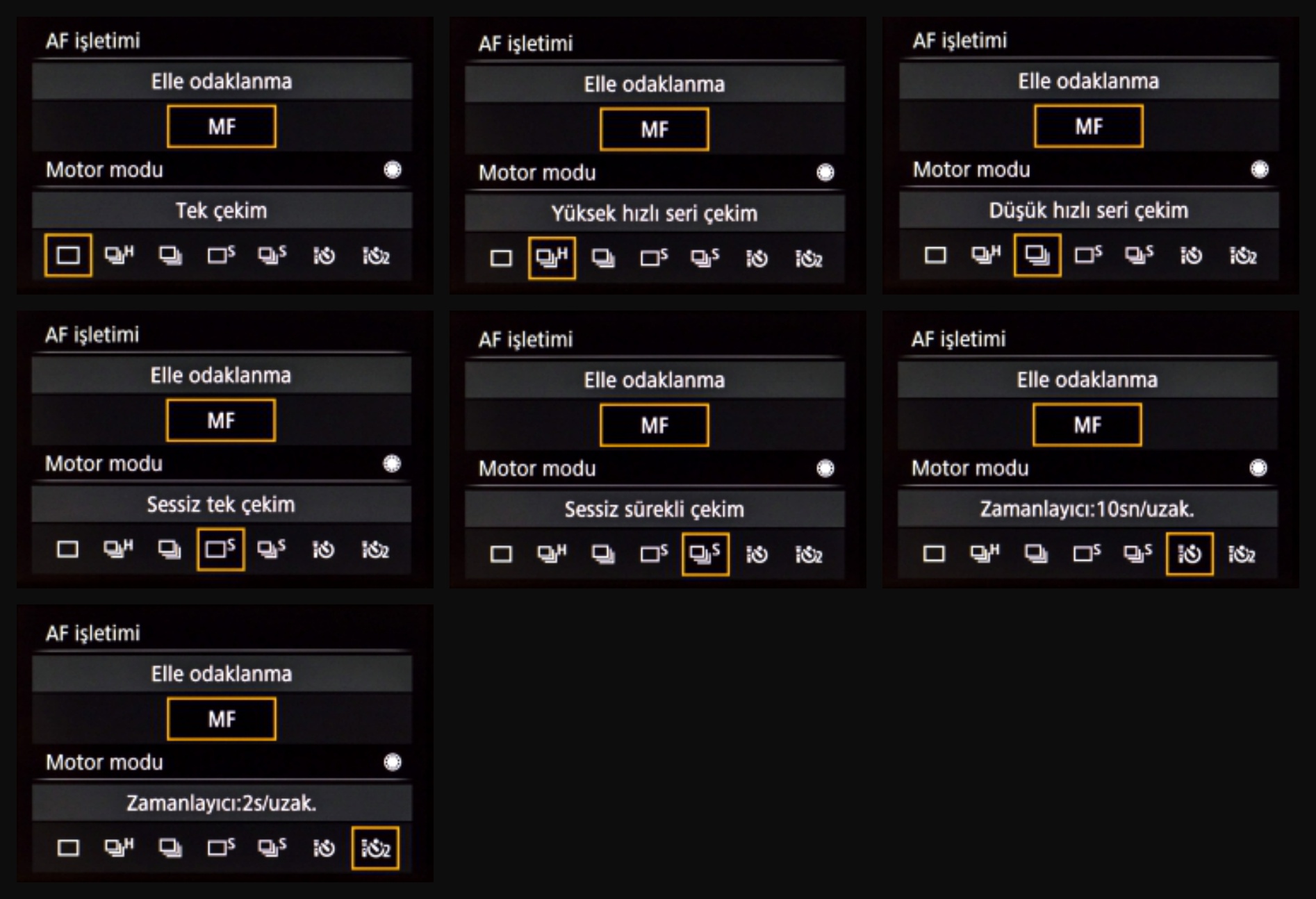 You may watch the Motor Modes and Shutter System of Canon 5DS in the video below. I have talked in Turkish language in my videos but you may listen the Shutter voices on the below video.
You may watch the Motor Modes and Shutter System of Canon 5DS in the video below. I have talked in Turkish language in my videos but you may listen the Shutter voices on the below video.
https://www.youtube.com/watch?v=ytKLsZC7a-M
Multiple exposure feature of analog cameras was first implemented for Canon 5D Mark III. When you enter the menu, choose the setting you wish to shoot. The options are:
- Additional
- Average
- Bright
- Dark
You can combine maximum of 9 photographs in a single frame as exposure number. As in the HDR menu, you can save all the photos you have taken. Overlaid photographs can be saved in RAW format as well.
You may test the multiple exposure mode from the options below.
There is one thing I would like to mention before going on with the video section: If you are into video shooting, 5DS series is not your camera. From now I would like to advise you to consider 5D Mark III and if you already own 5D Mark III then not to buy a 5DS.
5DS Series can shoot 30 fps videos at 1080p, and 60 fps videos at 720p. It can also record ALL-I and IPB. In 5D Mark III, there are Clean HDMI output and headphone terminal. These are the two musts for video users. Other than that, vital settings for video shooters such as focus peaking and zebra warnings are not present in this camera.
.MOV extension MPEG-4 AVC / H.264
29.97p, 25p and 23.976p with 1,920 x 1,080.
59.94i and 50i with 1,280 x 720.
29.976p and 25p with 640 x 480.
5DS Series is suitable for video recording but the manufacturing purpose of this camera is not video recording.
The following videos are processed in Imovie program.
https://www.youtube.com/watch?v=9eMnWIlwNNE
In the video below, tripod is not used in some frames.
https://www.youtube.com/watch?v=kYaxuXvoXLM
When accessory compliance is considered;
Canon WFT-E7 V2 and WFT-E7 Wireless File Transmitter can be used with the software upgrade on the first version.
Flashes and flash guns; Canon (90EX, 220EX, 270EX, 270EX II, 320EX, 380EX, 420EX, 430EX, 430EX II, 550EX, 580EX, 580EX II, 600EX, 600EX-RT, Macro-Ring-Lite MR-14EX, Macro Ring Lite MR-14EX II, Macro Twin Lite MT-24EX, Speedlite Transmitter ST-E2, Speedlite Transmitter ST-E3-RT
Battery Grip; BG-E11
Wireless Controller LC-5, Remote Controller RC-6 and Speedlite 600EX-RT
GPS; GPS GP-E2
Battery; LP-E6N – LP-E6
Charger: LC-E6
Adapter: ACK-E6
Canon 5DS Series incorporates a Full Frame sensor, so we can only use EF bayonet lenses in this body. Canon also announced the lens options that can be used with camera – 5DS Series- to obtain the sharpest results:
Zoom Lenses
- EF 8-15mm f/4L Fisheye USM
- EF 11-24mm f/4L USM
- EF 16-35mm f/4L IS USM
- EF 24-70mm f/2.8L II USM
- EF 24-70mm f/4L IS USM
- EF 70-200mm f/2.8L IS II USM
- EF 70-200mm f/4L USM
- EF 70-300mm f/4-5.6L IS USM
- EF 100-400mm f/4.5-5.6L IS II USM
- EF 200-400mm f/4L IS USM EXTENDER 1.4x
Wide Angle Prime Lenses
- TS-E 17mm f/4L
- TS-E 24mm f/3.5L II
- EF 24mm f/1.4L II USM
- EF 24mm f/2.8 IS USM
- EF 28mm f/2.8 IS USM
- EF 35mm f/2 IS USM
- EF 35mm f/1.4L II USM
Standard Prime Lenses
- EF 40mm f/2.8 STM
- EF 50mm f/1.2L USM
- EF 50mm f/1.4 USM
- EF 50mm f/1.8 II
- EF 50mm f/2.5 Compact Macro
Telephoto Prime Lenses
- EF 85mm f/1.2L II USM
- EF 85mm f/1.8 USM
- TS-E 90mm f/2.8
- EF 100mm f/2 USM
- EF 100mm f/2.8 Macro USM
- EF 100mm f/2.8L Macro IS USM
- EF 135mm f/2.0L USM
- EF 200mm f/2L II USM
- EF 200mm f/2.8L II USM
- EF 300mm f/2.8L IS II USM
- EF 400mm f/2.8L IS II USM
- EF 400mm f/4 DO IS II USM
- EF 500mm f/4L IS II USM
- EF 600mm f/4L IS II USM
- EF 800mm f/5.6L IS USM
Conclusion:
Without any doubt, not many photographers require 50 megapixels photo sizes. But for those that require that resolution, I can say that 5DS Series is the correct choice. Recently, I was with Mr. İbrahim Kahraman. He is a worldwide renowned architecture photographer. He is already the official photographer of Hilton Worldwide and also photographs many other local and international chain hotels. While I was talking with him, he said that if Canon 5DS R was not launched, he would be switching to a medium format camera for higher resolution. He said that especially in architectural shootings, Canon Tilt/Shift Series lenses are one of their kind and he is very pleased with their optical quality.
In short, Canon is providing 50.6 mp resolution with 5DS Series and therefore combining medium format photograph size in more compact body with easy to use and intuitive interface with a large lens, wide flash range and AF technology.
When you compare it with Canon 5D Mark III, you will see that 5DS Series produces sharper and more natural colors. When ISO performances are compared, 5D Mark III is one step ahead. Other than that, if your more interested in video than photography, 5D Mark III will be the right choice for you. However, if I buy a new camera right now, I would definitely consider 5DS series rather than 5D Mark III.
https://youtu.be/uxulTrEYpgU

